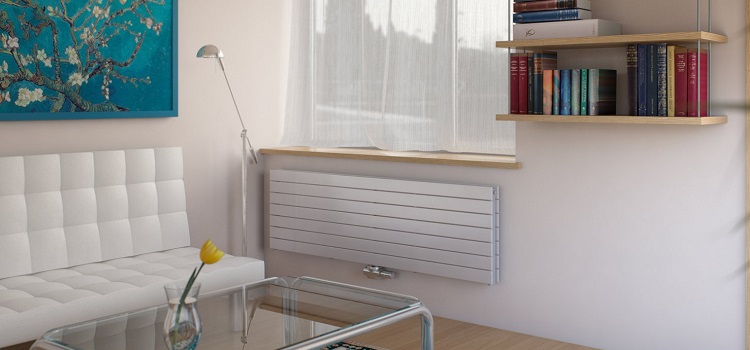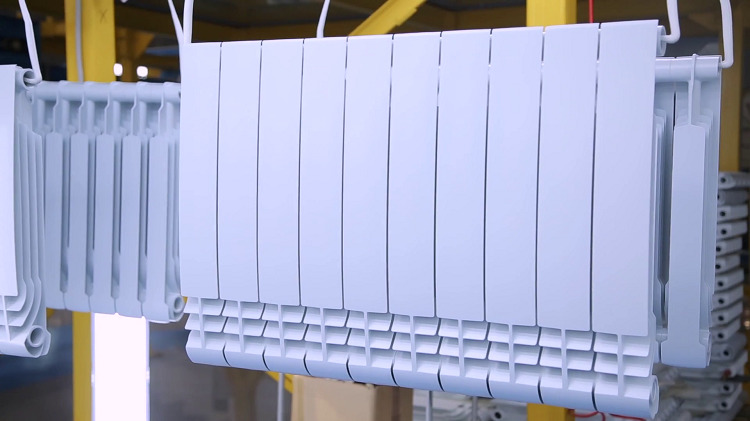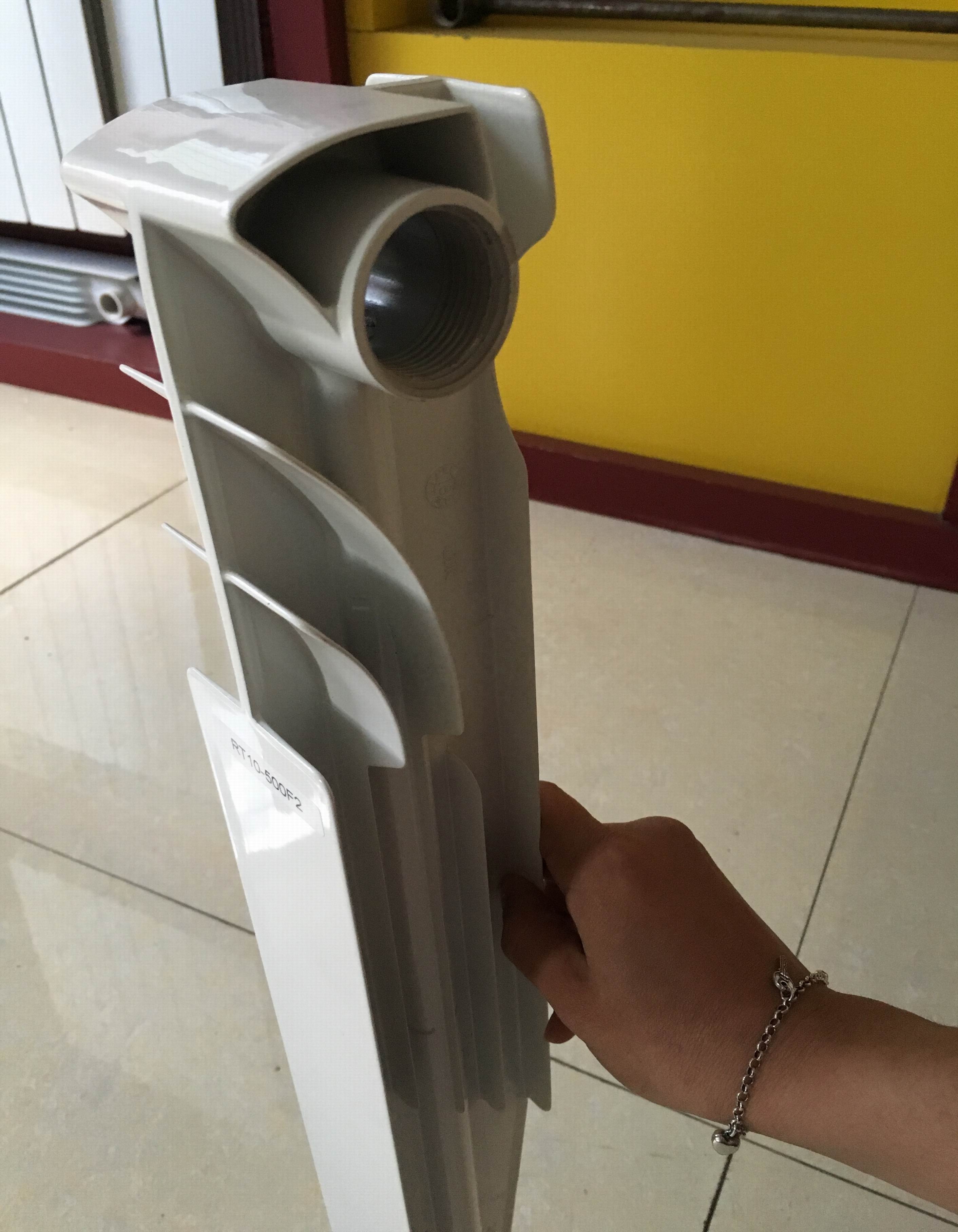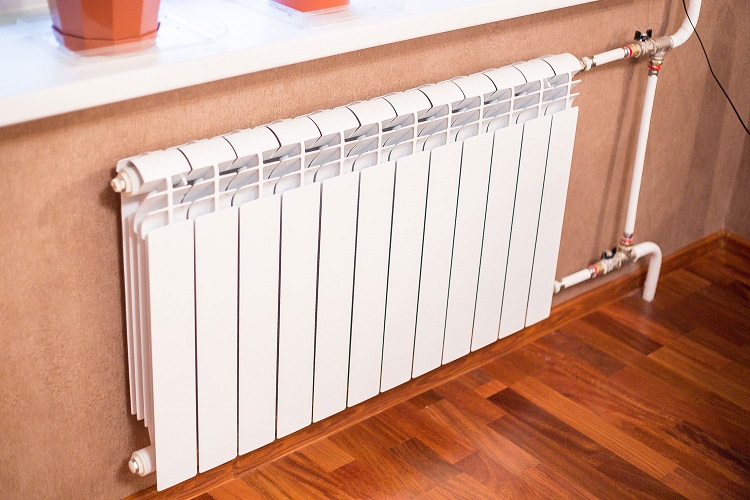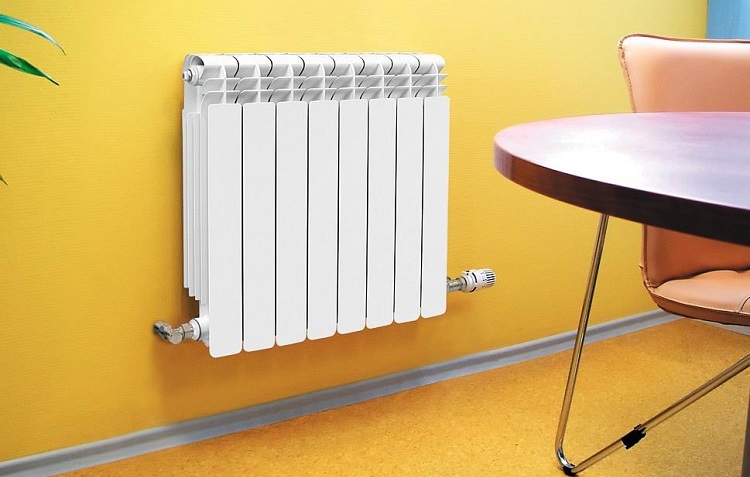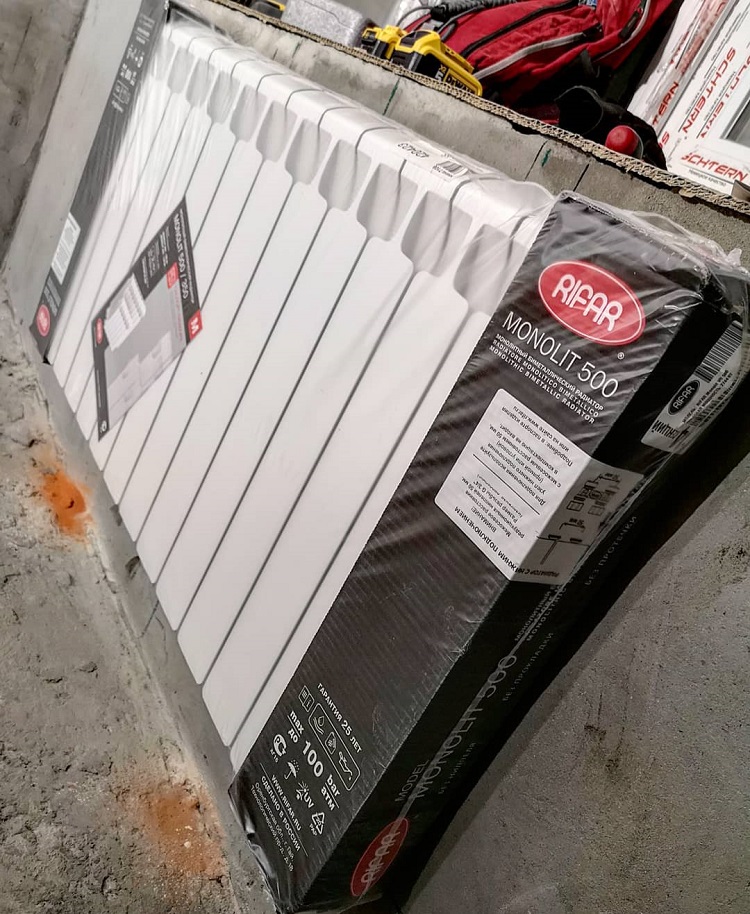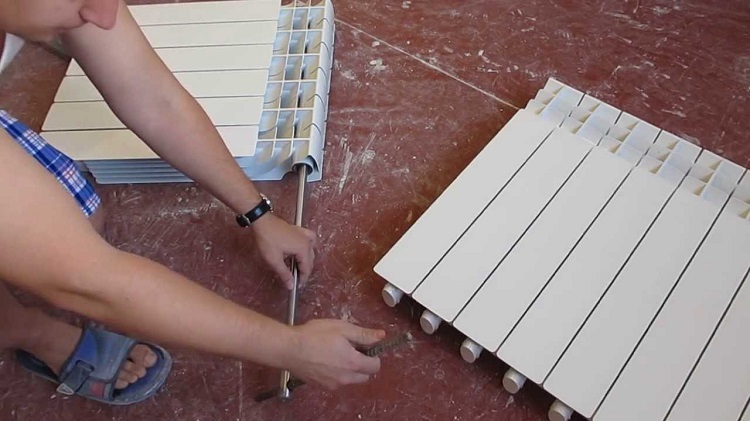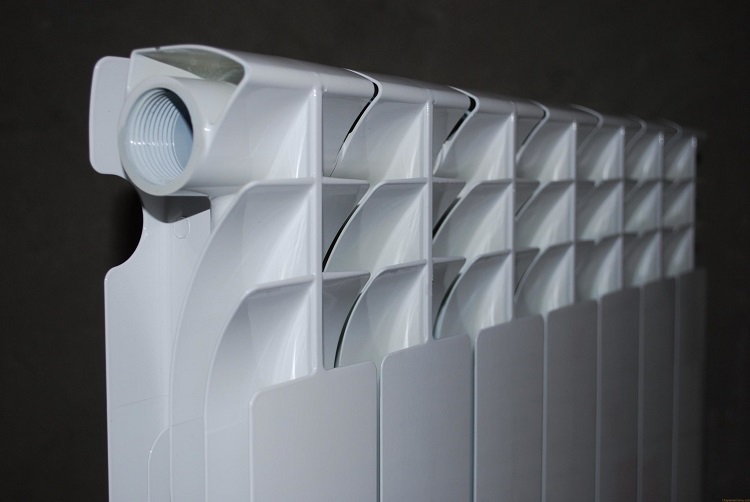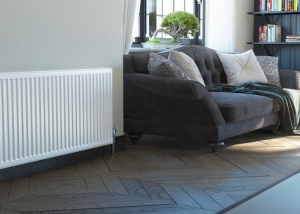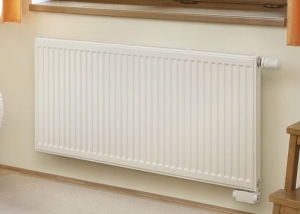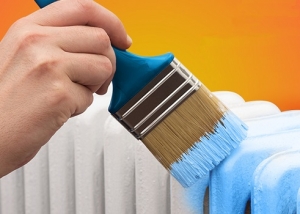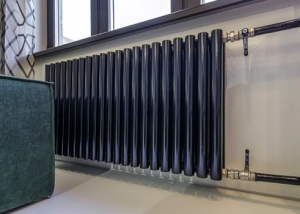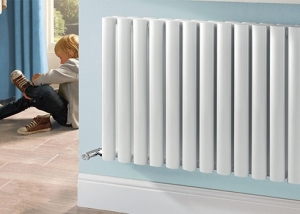Today, consumers have become more interested in Russian-made bimetallic radiators, since they are practically not inferior to foreign brands in many operational indicators. Domestic equipment is less demanding on the quality of the coolant of urban heating systems, but the design and build quality are highly appreciated.
Content
- 1 What domestic brands offer bimetal
- 2 A variety of heating equipment from a Russian manufacturer
- 3 Features of bimetallic products of domestic production
- 4 What is the difference between heating from steel and aluminum of the Russian release
- 5 Advantages and disadvantages of domestic bimetal radiators
- 6 What to choose domestic heating radiators
What domestic brands offer bimetal
Modernization of old heating systems is necessitated, and the cost of components is of great importance when creating new communications. The latest climate systems offer savings in many ways:
- maximum warming of houses and apartments;
- connecting Russian-made heating radiators from a budget and economical niche;
- inclusion of environmental technologies;
- equipment of the heating system with climate control, “smart home” and “warm floor” circuits controlled from a smartphone or presence detector.
In the houses of the old layout, not all modern methods are applicable, but each owner can replace the old cast-iron "accordions", which have minimal efficiency due to clogging, with new bimetal heating sections.
In the domestic market of thermal equipment in the last 2-3 years, such Russian brands have been firmly entrenched:
- PRADO (Prado);
- Teplopribor;
- Royal Thermo;
- RIFAR (Rifar);
- KZTO;
- Itermic (Aitermic);
- Halsen;
- Thermal
- Logatrend Buderus et al.
Russian batteries, such as the Royal Thermo revolution bimetall 350 (based on a steel tube), are in no way inferior in quality and reliability to Italian and German equipment. These products do not require expensive customs clearance and payment of complex taxes, so their price is affordable for every buyer.
Only one domestic Royal Thermo enterprise produces up to 12 million sections per year, and there is a growth trend. Russian manufacturers also offer them reliable pipes and fittings - not only made of steel, but also polymer. Experts believe that over time, our enterprises will fill in all the needs of consumers from the Russian Federation and neighboring countries.
A variety of heating equipment from a Russian manufacturer
Reliability of equipment is not an idle question in the country where it has been cold for more than six months, the heating season lasts almost as long. For a long time, they focused on cast-iron batteries, then they were replaced by lighter bimetallic models of imported production. Almost simultaneously, offers came from other materials, including aluminum and copper.
With the advent of thermal equipment on the market with similar products, Russian manufacturers had to expand the range of products, mastering the production of bimetallic radiators and aluminum or semi-metal, such as Thermo rus 500 80 (12 sections).All models are classified by type of material:
- steel (base) and aluminum (outer shell);
- copper and aluminum.
Domestic production of modern heating equipment is developing, in catalogs and specialized stores you can see all varieties of heat engineering:
- outdoor;
- wall mounted;
- in-floor.
According to the type of construction in Russia, solid (tubular), such as Monolit 350 100, and sectional models, which can be extended in length, are produced. The most popular are STOUT Space 350 for 12 sections.
No less popular are the RBS 500 sectional models (BM bimetal radiator from SANTEHPROM JSC) and their domestic competitors - GLOBAL batteries. Products made of steel or copper tube in an aluminum casing are distinguished by excellent heat output; they are more aesthetic and practical than obsolete cast-iron counterparts, which had no alternative half a century ago.
However, design options that mimic the old cast-iron "accordions" are also produced by Russian enterprises. Most often, these are floor-mounted retro floor-standing radiators from Global, which are in no way inferior to imported models - the design with solder is impressive. They can be repainted, unlike some cast-iron batteries of foreign manufacture.
It is nice to note that in the catalogs you can find well-equipped:
- vertical and horizontal models;
- floor convectors and built-in units;
- heated towel rails and design radiators, made in a single key.
On sale it is also easy to find more expensive models, such as Ventil 200 and Base 500 - 100, with a different type of connection to the system. There is a side, diagonal and lower (saddle) connection to the pipes of the central (and autonomous) heating.
Features of bimetallic products of domestic production
The quality of domestic products is due to the introduction of publicly available technologies, patented know-how from world brands and the development of domestic specialists in bimetal heating radiators. One of the advantages is the protection of the inner surface, as with Rifar base ventil 350 products.
The need for such an improvement in equipment is associated with the low quality of the coolant supplied to the central city systems.
Helpful advice! While Russian standards for water circulating through central heating pipes will be far from European standards, it is better to rely on domestic heating units.
Russian bimetallic products differ:
- high strength;
- adaptability to blowing and cleaning from rust and dirt;
- the ability to connect in various ways;
- adapting the battery format to the window sill of most prefabricated houses;
- the possibility of using antifreeze (non-freezing coolant in a closed loop of private houses).
Characteristics give the right to argue that domestic products are no worse than imported counterparts, but remain more attractive in value.
What is the difference between heating from steel and aluminum of the Russian release
Bimetallic radiators from a Russian manufacturer demonstrate high reliability in extreme conditions - with system water hammer (pressure surges) and water pollution. The inner coating of the steel base protects the heating equipment from rust.
Important! Although “stainless steel” is indicated in the documents from the manufacturer, over time the internal protection loses its resistance to corrosion processes. They are inevitable, especially after the discharge of water from pipes in the summer.
In Russian realities, the most attractive bimetallic radiators from foreign brands often cause disappointment - due to their inability to extreme conditions.In addition, our products have a sufficient thickness of pipes and casing, so heating systems can tolerate periods of severe frost.
Russian manufacturers have long moved away from the old production system and switched to new technologies that guarantee up to 20-30 years of excellent operation. It is encouraging not only their functionality, but also the excellent design - they fit perfectly into various interiors (houses, offices, shops).
Russian batteries are produced from a steel frame in an aluminum case, on which thermal enamel is applied. It is highly resistant to scratches and mechanical damage. If desired, the batteries can be repainted in a different color or reopened to eliminate defects, but you need the same (resistant to high temperature) paint for metal.
Experts also recommend paying attention to domestic models from RIFAR and MONOLIT. They are several times cheaper than Italian STYLE PLUS 500 and German TENRAD 500. Russian equipment remains optimal for heating all types of premises, including city apartments and the private sector, trading floors and office centers.
In the market you can find low-quality Chinese counterfeit branded products:
- pipes and fittings for mounting batteries;
- bimetallic (and other) models;
- heating radiators;
- heated towel rails,
- convectors;
- design radiators.
Therefore, it is necessary to purchase heating equipment in company stores and outlets offering certified products.
Advantages and disadvantages of domestic bimetal radiators
Bimetal has increased heat dissipation. The only weak point of bimetallic models is the joints of steel and aluminum, where they are connected to central heating pipes.
Emergencies are extremely rare, but with a high probability of strong water hammer, it is better to take solid models, not sectional ones. The installation of new heat blocks is best entrusted to specialists.
With proper connection, Russian batteries of 2 types of metal are practically devoid of shortcomings:
- differ in high strength, reliability and durability;
- have maximum efficiency;
- virtually eliminate the possibility of leaks in the housing even when increasing the number of sections;
- not inferior in design to the best import brands, rounded ribs guarantee safety even in children's rooms);
- they are designed for high working pressure (up to 20 Atm);
- steel ducts are equipped with enhanced corrosion protection;
- adapted for coolants of any quality;
- the catalogs contain products of different colors, if you wish, you can contact the manufacturer and order a series of the required shade of heat-resistant enamel for your interior;
- many models are equipped with a thermostat and a flow control system to reduce the temperature of the batteries during warming (if it is absent, it is possible to install it at the joint with pipes);
- radiators are presented in a large assortment according to the overall format (dyne, width and depth) and the number of sections (different from the standard of 12 segments);
- high compatibility with pipes of any heating system, thanks to a wide range of couplings, fittings and adapters;
- the price tags for domestic models are significantly lower than for imported bimetal analogues.
Like any product, bimetal radiators have certain flaws, which are important to know before a purchase is made.
- Batteries have a small pipe diameter with a similar lumen width, where dirt accumulates over time (the cause of clogging and reduced system efficiency). The problem is solved by cleaning radiators. Prevention - filter installation.
- With poor-quality coolant, the service life is reduced.
- The different expansion coefficient of steel and aluminum during rapid heating causes a characteristic crackle at the joints, but you can get used to it.
- The cost of steel and aluminum radiators is higher than cast iron, but this is not a reason to refuse to buy.
What to choose domestic heating radiators
When choosing a model, it is important to know the dimensions of the place where the battery will be placed (for example, a window sill), measurements must be taken before purchase. In basement rooms (without windows) and semi-basement rooms, as well as in rooms with swinging balcony doors, it is better to install vertical or floor batteries of the required format.
When buying, it is also important to pay attention to the certificates and technical description of the model, which describes all the parameters and equipment. The quality of the paint cannot be checked in the catalog, but it becomes obvious when you lightly press it with your finger or fingernail - there should be no residue on the enamel.
An idea of the cost of domestic batteries can be obtained from the table.
Table 1
| brand, model | Heat dissipation 1 section, W | Cost per section, rub |
| Rifar base 350 | 136 | 660 |
| Rifar base 500 | 204 | 670 |
| Heat BR1-500 | 197 | 620 |
| Piano Thermo Revolution 500 | 168 | 680 |
| Piano Thermo Vittoria 500 | 167 | 670 |
| Forte Prom Halsen BS | 200 | 570 |
For comparison, for one section of an Italian-made radiator with similar characteristics, you will have to pay at least 720 rubles, and although the difference seems small, when buying batteries for several rooms, the overpayment will be significant.
It is not difficult to choose Russian-made bimetallic radiators, given the huge market of offers. With full confidence, it can be argued that all products meet the high level of requirements of domestic and European standardization, so you can safely give them preference.
